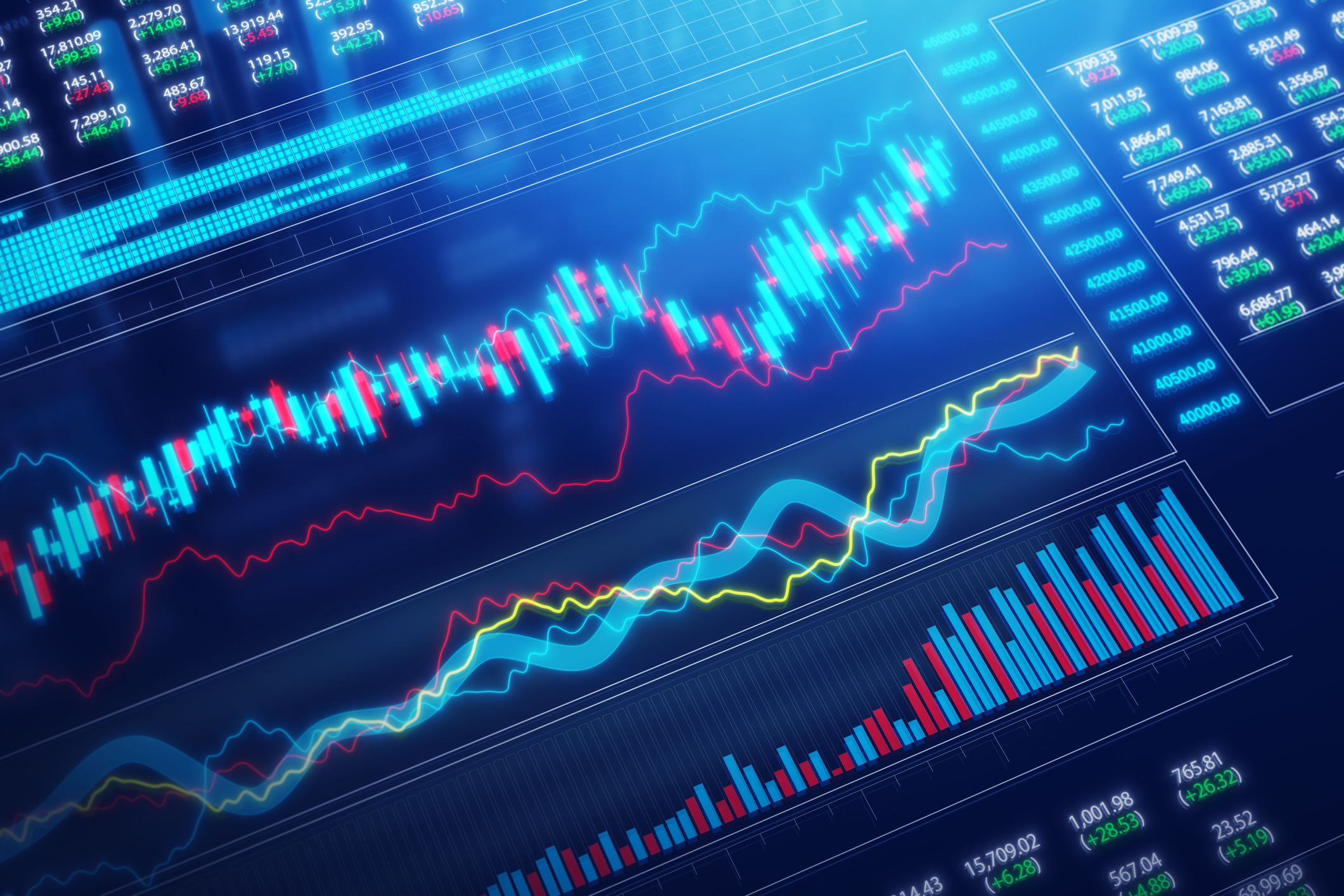When Actively Managed Funds Are Worth It
For some investment categories, choosing an actively managed fund makes sense.


It's hard to beat the market and the index funds that track them.
The numbers don't lie: Only one-fourth of all actively managed funds in the U.S. topped the average of their index fund counterparts over the 10-year period that ended in June, according to the latest Active/Passive Barometer report by Morningstar.
But in certain pockets of the market, active managers do a better job of beating their benchmarks. Studies show that active funds that invest in small and midsize companies, foreign shares and intermediate-term bonds, for instance, have had more success beating their benchmarks than funds in other market segments, according to Morningstar.
From just $107.88 $24.99 for Kiplinger Personal Finance
Become a smarter, better informed investor. Subscribe from just $107.88 $24.99, plus get up to 4 Special Issues

Sign up for Kiplinger’s Free Newsletters
Profit and prosper with the best of expert advice on investing, taxes, retirement, personal finance and more - straight to your e-mail.
Profit and prosper with the best of expert advice - straight to your e-mail.
"Areas of the market that are less picked over are more target rich for active fund managers," says Ben Johnson, director of global ETF research at Morningstar. Why's that? "There's less opportunity if you're coming up with the 12 millionth investment thesis for Apple."
Indeed, it can be difficult for active managers to stand out in highly trafficked market corners, such as large-company stocks. Most of these firms are as closely followed as your favorite sports team or Netflix TV series. More than 50 analysts track Amazon.com's (AMZN) every move, for example. That goes some way to explain why only 17% of all U.S. large-company funds outpaced the S&P 500 over the 10-year period ending in June, according to data from S&P Dow Jones Indices.
Herewith, a guide to where it pays to go active and some funds to consider.
The best portfolios will use index funds for heavily trampled parts of the market and put active funds to work for those asset classes in which an active manager has a better shot of beating the index. "A blend of the two is a good way to go," says Steve Azoury, a chartered financial consultant and founder of Azoury Financial. (Unless otherwise noted, returns and data are through Nov. 5.)
Find Stocks That are Flying Under the Radar
In general, the smaller the company, the less likely it is to be followed by the Wall Street research machine.
"It's almost like deep-sea diving," says Morningstar's Johnson. The smaller the company's market value, "the murkier it gets and the fewer predators there are."
That's a good environment for active fund managers. It boosts a manager's odds of identifying a good opportunity ahead of rivals, says Craigh Cepukenas, a comanager for Artisan Small Cap (ARTSX, expense ratio 1.21%) and Artisan Mid Cap (ARTMX, 1.18%) funds. The strategy at both funds is to discover disruptive companies that are driving change, then hold them even after they've become larger companies. "We let our winners run," says Cepukenas.
The Artisan funds also favor under-the-radar companies. Only six Wall Street analysts cover Valmont Industries (VMI), for example. The maker of metal products, such as poles used for traffic lights, is a top-20 holding in Artisan Small Cap. Some of the fund's other low-profile holdings, such as digital health company OptimizeRx (OPRX) and Advanced Drainage Systems (WMS), a water management company, have even fewer analysts following them.
Active funds are all about exploiting what Wall Street dubs market "inefficiencies," which occur when securities' market prices vary from their true fair value, says Brian Price, head of investment management for Commonwealth Financial Network.
That's what makes active midsize stock funds appealing: Midsize companies often fall through the cracks. They "lack the excitement of small companies and the name recognition of large names," says Artisan's Cepukenas.
In particular, actively managed funds that focus on fast-growing midsize U.S. companies tend to shine brightest against their index fund rivals. Alger Mid Cap Growth (AMGAX, 1.30%) ranks among those index beaters. It has topped its benchmark, the Russell Mid Cap Growth index, and its category peers over the past one-, three-, five- and 10-year periods. The fund typically charges a 5.25% load, but you can buy shares for no fee at Fidelity and Charles Schwab.
Look Overseas to International Stocks
International stock pickers have an edge over their benchmarks in part because they have "boots on the ground" in the countries where they invest, says Dan Genter, CEO and chief investment officer of RNC Genter Capital Management. That allows them to better understand what drives local economies and ferret out companies with growth potential before the competition does.
The managers at Wasatch Emerging Markets Select (WAESX, 1.51%) and Wasatch Emerging Markets Small Cap (WAEMX, 1.95%), for instance, aren't afraid to look beyond their foreign-stock benchmarks to find undiscovered opportunities.
When the managers travel abroad, local brokers who help them set up company meetings often say, "Nobody ever visits this company. Why do you care?" says Ajay Krishnan, a comanager for both funds. But that's precisely the draw. Both Wasatch funds have outpaced their benchmarks over the past one, three and five years.
Among foreign-stock funds, those that favor bargain-priced shares have tended to fare best against their index fund counterparts, according to Morningstar.
Some foreign large value funds to consider include Causeway International Value (CIVVX, 1.10%), a fund that zeroes in on good companies going through a rough patch. Oakmark International (OAKIX, 1.04%) is a Morningstar gold-rated fund that seeks stocks trading 30% below their business value using what Morningstar analyst Andrew Daniels calls “old-fashioned detective work.”
Being Choosy With Bonds
Active bond fund managers can be nimbler than their index fund counterparts – weeding out or avoiding low-quality issues that might make up sizable parts of many bond indexes or giving more weight to more-opportunistic segments of the market.
The Bloomberg U.S. Aggregate Bond index, for example, currently has a large weighting (45.1%) in U.S. Treasuries but smaller helpings of higher-yielding bonds, such as mortgage-backed securities and corporate-issued debt. In recent years, any intermediate-term bond fund managers willing to tilt their portfolio toward higher-yielding bond sectors, such as corporate debt rated triple-B or lower, or asset-backed securities with higher yields, could improve their chances of outpacing the Agg, says Commonwealth Financial Network's Price.
That's partly why Fidelity Total Bond ETF (FBND, 0.36%) has topped the Agg index over the past one, three and five years. The fund currently holds more than 10% of its assets in high-yield debt (credit rated double-B to triple-C), which helped boost returns; by contrast, the Agg doesn't hold any high-yield debt.
Baird Aggregate Bond (BAGSX, 0.55%) stays in investment-grade territory (debt rated triple-A to triple-B) but lately has gained an edge by loading up on more corporate debt than the Agg, particularly in financials. The fund beat the index over the past one, three and five years.
Profit and prosper with the best of Kiplinger's advice on investing, taxes, retirement, personal finance and much more. Delivered daily. Enter your email in the box and click Sign Me Up.

Adam Shell is a veteran financial journalist who covers retirement, personal finance, financial markets, and Wall Street. He has written for USA Today, Investor's Business Daily and other publications.
-
 What to Do If You Plan to Make Catch-Up Contributions in 2026
What to Do If You Plan to Make Catch-Up Contributions in 2026Under new rules, you may lose an up-front deduction but gain tax-free income once you retire.
-
 If You'd Put $1,000 Into Lowe's Stock 20 Years Ago, Here's What You'd Have Today
If You'd Put $1,000 Into Lowe's Stock 20 Years Ago, Here's What You'd Have TodayLowe's stock has delivered disappointing returns recently, but it's been a great holding for truly patient investors.
-
 How to Max Out Your 401(k) in 2026 (New Limits are Higher)
How to Max Out Your 401(k) in 2026 (New Limits are Higher)In 2026, the maximum contribution limits for 401(k) plans have increased, giving you an excellent shot at maximizing your retirement savings.
-
 Stocks End Volatile Year on a Down Note: Stock Market Today
Stocks End Volatile Year on a Down Note: Stock Market TodayAfter nearing bear-market territory in the spring, the main market indexes closed out the year with impressive gains.
-
 Stocks Extend Losing Streak After Fed Minutes: Stock Market Today
Stocks Extend Losing Streak After Fed Minutes: Stock Market TodayThe Santa Claus Rally is officially at risk after the S&P 500's third straight loss.
-
 Santa Claus Rally at Risk as Tech Stocks Slump: Stock Market Today
Santa Claus Rally at Risk as Tech Stocks Slump: Stock Market TodayThe Nasdaq Composite and Dow Jones Industrial Average led today's declines as investors took profits on high-flying tech stocks.
-
 Gold and Silver Shine as Stocks Chop: Stock Market Today
Gold and Silver Shine as Stocks Chop: Stock Market TodayStocks struggled in Friday's low-volume session, but the losses weren't enough to put the Santa Claus Rally at risk.
-
 The Santa Claus Rally Officially Begins: Stock Market Today
The Santa Claus Rally Officially Begins: Stock Market TodayThe Santa Claus Rally is officially on as of Wednesday's closing bell, and initial returns are positive.
-
 'Humbug!' Say Consumers, Despite Hot GDP: Stock Market Today
'Humbug!' Say Consumers, Despite Hot GDP: Stock Market Today"The stock market is not the economy," they say, but both things are up. Yet one survey says people are still feeling down in the middle of this complex season.
-
 Stocks Rise to the Spirit of the Season: Stock Market Today
Stocks Rise to the Spirit of the Season: Stock Market TodayInvestors, traders and speculators are beginning to like the looks of a potential year-end rally.
-
 Nasdaq Leads as Tech Stages Late-Week Comeback: Stock Market Today
Nasdaq Leads as Tech Stages Late-Week Comeback: Stock Market TodayOracle stock boosted the tech sector on Friday after the company became co-owner of TikTok's U.S. operations.